Wonder of nature: a blob that can solve puzzles and has 720 genders (11 photos + 2 videos)
Not long ago, a creature was presented in the Paris Zoological Park that surprises with its incredible capabilities: without a brain, it solves logical problems, is able to find food and look for its own kind. 
Physarum polycephalum (Multi-headed Physarum) is an amazing creature that looks like a mushroom or jellyfish. But it is none of the above. Experts have classified these creatures as protists. Myxomycete slime mold has a bright yellow color. 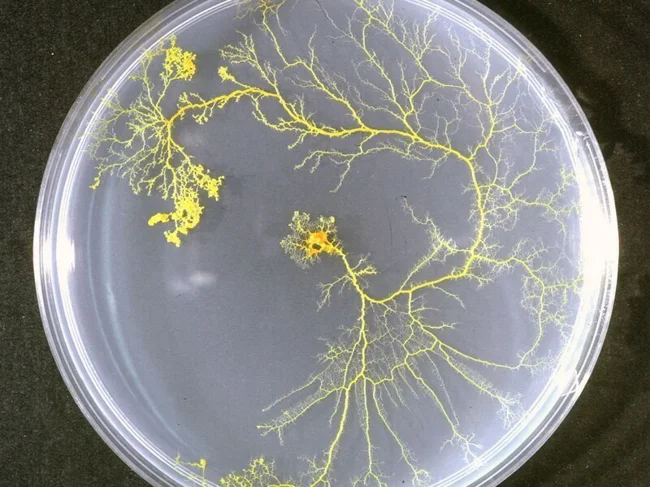
The single-celled organism is surprising in that it can grow to several square meters, although most individuals remain miniature. 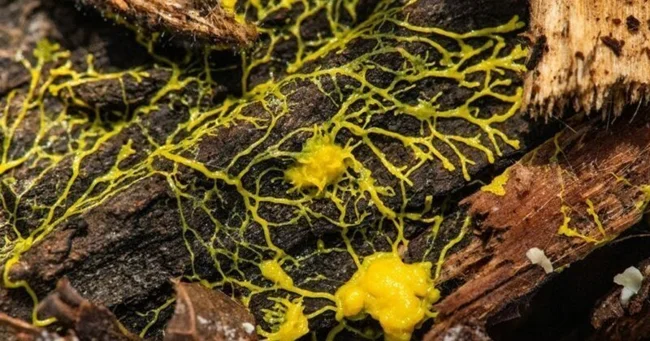
P. polycephalum lives in forests, it can be found on the underside of logs and rotten snags - there these single-celled comrades catch bacteria and fungal spores for lunch. To capture a hard-to-reach piece of food, the “drop” is able to grow long processes that resemble a branched circulatory system, and they also move. Not as fast as the forest inhabitants familiar to the eye, but quite quickly for a creature without a brain. 
What causes the movement of the physarum? There is an assumption that the movement is associated with a change in the viscosity of a special protein - myxomyosin - when interacting with ATP.
Cytoplasmic currents in plasmodium were observed under a microscope. In the direction of movement, the plasmodium developed strands - outgrowths that resembled the pseudopodia of protozoa. At the same time, the total volume of cytoplasm in the physarum was large at the anterior end of the movement, i.e. the drop seemed to flow in one direction, moving a little bit towards its target. And the goal could be, for example, food or escape from a stimulus. By the way, the speed of movement of Plasmodium was also measured, and it is not so small - this organism could move 4 centimeters per hour. Of course, in terms of slowness, he outdid even snails; on the other hand, why should he rush? 
Scientists once had some fun and laid out food for this organism in a diagram representing Tokyo and 36 surrounding cities. Of course, after a while, the same pattern appeared in the Petri dish, only in the form of a slime mold spreading its “tentacles.” 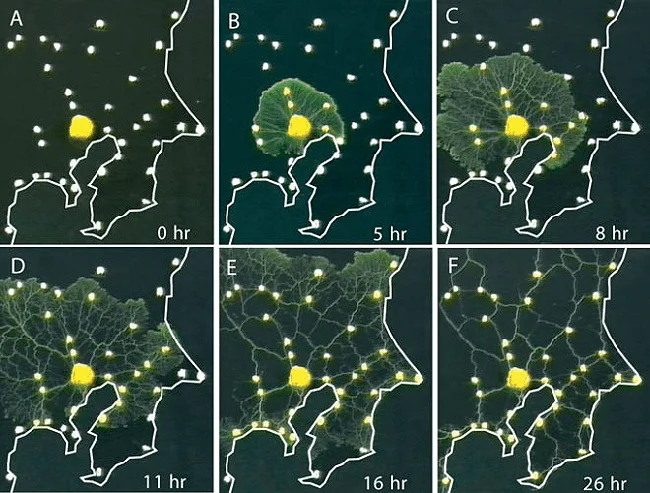
Of course, you say, what's so mysterious about connecting the dots? However, let us remember that this task was proposed to a creature without a brain, and finding the most optimal and economical way to connect them requires complex mathematical calculations. And the myxomycete coped with all this excellently.
Many experiments like this have been carried out since. Scientists have found that when plasmodium moves, it leaves behind a trail of mucus, and in the future, when searching for food, it is no longer interested in the areas it has traversed. Thus, the mucus seems to manage the “memory” of this incredible organism, helping it find new paths.
Slime mold lunch
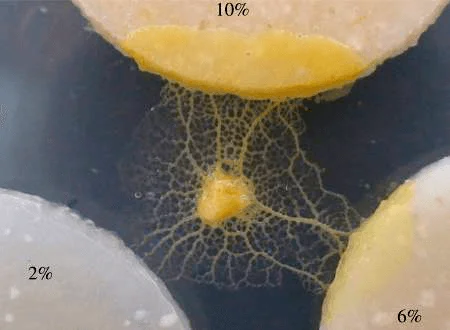
Other experiments were also interesting, during which scientists found that Plasmodium is a picky eater. And in conditions where he was offered several food options, he chose the most high-calorie ones. Thus, the “drop” was provided with 3 nutritional blocks with oatmeal of different concentrations. The scientists' expectations were justified: in conditions of hunger, the plasmodium always chose a higher-calorie block - in this case, 10%, but in moments of stress it could make the wrong choice. For example, if a slime mold was exposed to a bright light, it would rush to the first food source it found.
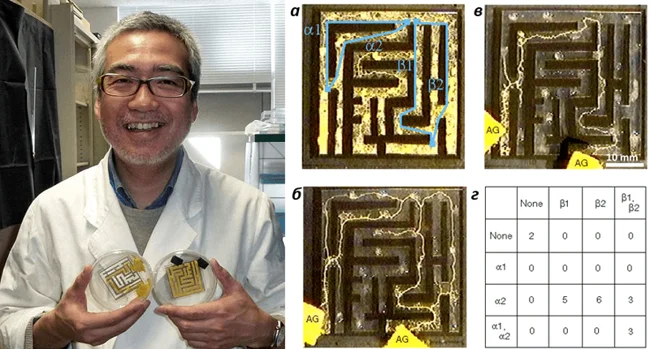
Another Iq test was conducted by Toshiyuki Nakagaki, a Japanese scientist at Hokkaido University. He placed individual pieces of plasmodium in a small maze; After some time, the “drops” began to grow, merging with each other and filling the entire labyrinth.
When agar blocks containing oatmeal (food for Plasmodium) were placed at the entrance and exit of the puzzle, the organism found the shortest path from one food source to another and formed a thickened cord, stretching it through the labyrinth. At the same time, he was not interested in long sections, but only in the shortest path.
The logical conclusion was made that to increase the chances of survival, plasmodium chooses the most effective way to obtain nutrients. True, scientists noticed that “...single-celled creatures can exhibit primitive intelligence” - this maxim generated a huge resonance in the scientific world. And its authors even won the Ig Nobel Prize in cognitive science in 2008 “for research that first makes you laugh and then makes you think.”
720 floors

We all remember that in humans, sex is determined by the combination of chromosomes carried by the sperm and egg. When they fuse, the new cell will have XX chromosomes (female) or XY chromosomes (male).
Things are much more interesting for the slime mold. This mate's sex is determined by three different locations or "loci" on their chromosomes, each of which has many different gene variations. Scientists have calculated that there can be up to 720 of these combinations of sex chromosomes. And each of them will, strictly speaking, be a separate sex. Another thing is that two slime mold spores do not need to be the same, otherwise they would be looking for a mating partner for their entire lives.
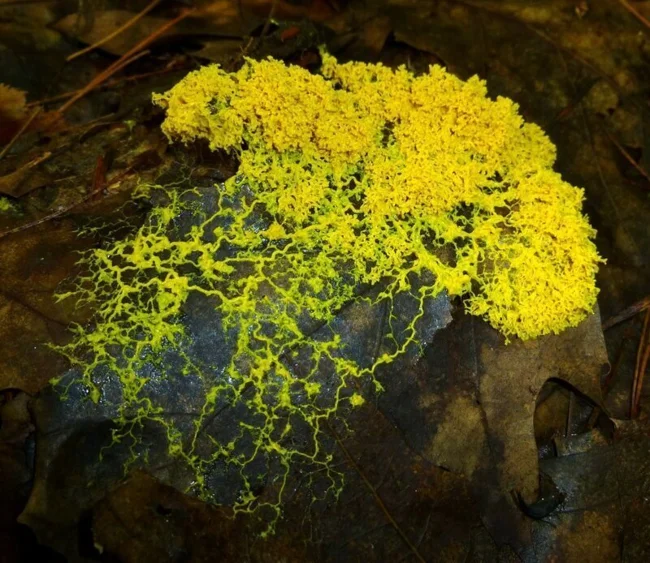
Scientists are trying to use the unusual abilities of Physarium. So in May 2007, researchers from Southampton (UK) were able to construct an unusual chip that was controlled not by wires and transistors, but by Physarum polycephalum. The chip was connected to the computer via a regular USB interface.
The creators of the biochip used the positive reaction of the physarum to food and the negative reaction to light. The body of the multi-headed slime mold was placed in a special container with tubes connected to it. Through them, the physarum was supplied with nutrients, and the mushroom itself was surrounded by numerous electrodes that recorded the body’s reaction.
The biochip created in this way detected the presence of organic compounds in liquids within a few seconds. Scientists believe that this algorithm can be used to determine the presence of various substances in a liquid, including poisonous ones. Currently, the fungus lives in a microchip for only a week, but researchers hope that they will be able to increase its lifespan.
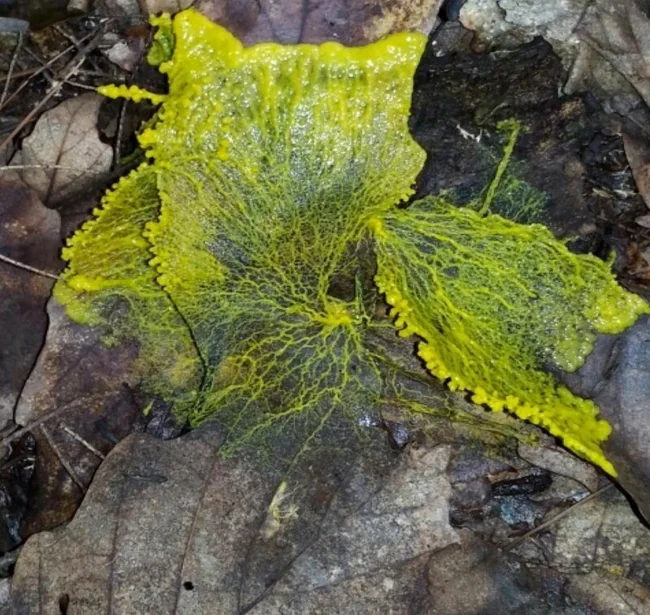
If we reflect on the above experiments, can we really conclude that Physarum polycephalum is, so to speak, sapiens? A sentient being? Most likely not, because in this case many biological systems could be called intelligent. The behavior of the physarum is determined by its reaction to the environment. He received this ability during evolution and mastered it perfectly, because otherwise it would have been much more difficult for him to survive.
And now, looking at simple organisms, it’s worth thinking: are they so primitive?

